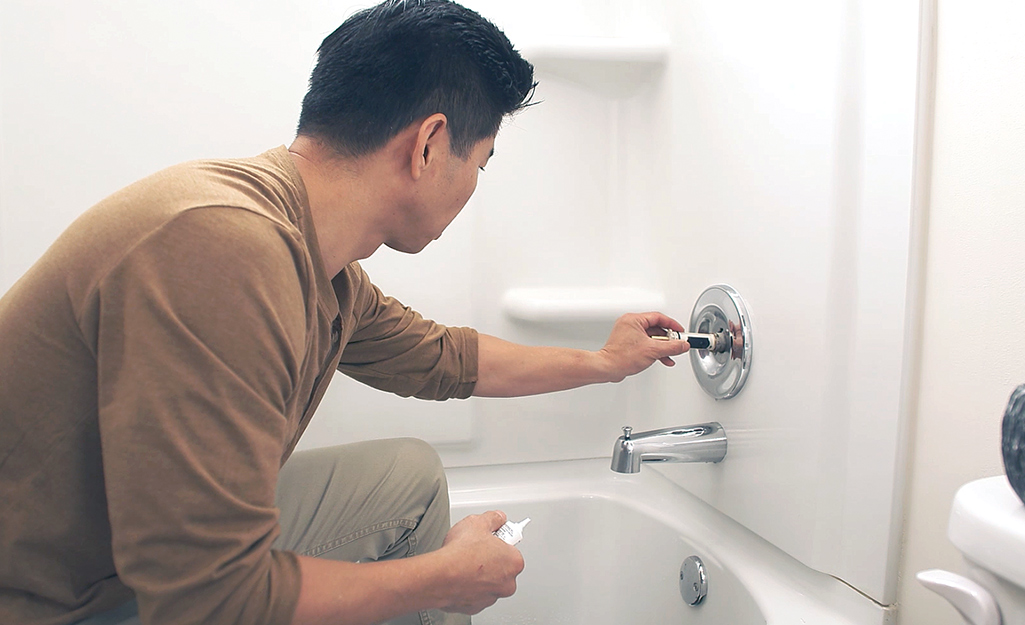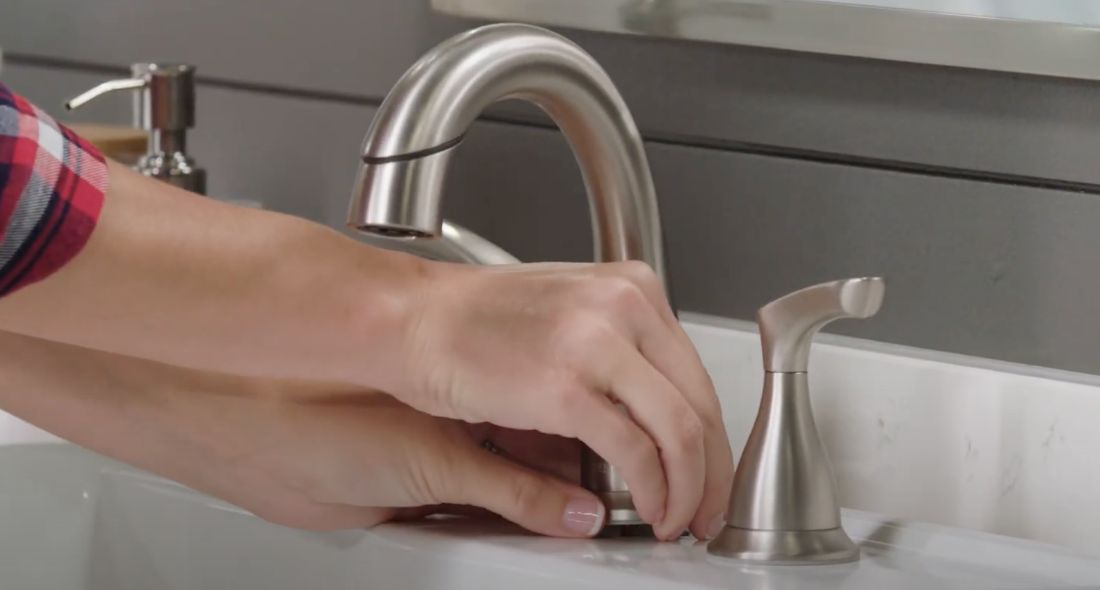Your Importance of Dealing with a Dripping Faucet
Your Importance of Dealing with a Dripping Faucet
Blog Article
Each person will have their private way of thinking with regards to Water Dripping from Faucet: Why and How to Fix.

Trickling faucets could seem like a small trouble, however their effect surpasses just the annoyance of the sound. From wasting water to incurring unneeded financial prices and health threats, overlooking a leaking tap can lead to numerous consequences. In this post, we'll explore why it's crucial to resolve this common home problem quickly and successfully.
Wastefulness of Water
Environmental Effect
Leaking faucets contribute substantially to water waste. According to the Epa (EPA), a single faucet dripping at one drip per secondly can throw away greater than 3,000 gallons of water each year. This not just pressures water sources yet also influences ecosystems and wildlife depending on them.
Financial Costs
Increased Water Costs
Past the environmental influence, trickling faucets can inflate water expenses considerably. The accumulated wastage over time converts into greater energy costs, which could have been prevented with timely repair services.
Possible Residential Or Commercial Property Damage
Furthermore, long term trickling can bring about harm to fixtures and surfaces surrounding the tap. Water accumulation can create staining, corrosion, and also architectural problems if left ignored, causing added repair service expenses.
Health and wellness Issues
Mold And Mildew and Mildew Development
The continuous presence of dampness from a dripping faucet creates an excellent setting for mold and mildew development. These fungis not just jeopardize indoor air top quality but likewise present health and wellness risks, specifically for individuals with breathing problems or allergic reactions.
Waterborne Conditions
Stationary water in trickling taps can end up being a breeding ground for germs and other pathogens, enhancing the threat of waterborne illness. Impurities such as Legionella germs flourish in stationary water, potentially causing major diseases when ingested or breathed in.
Do it yourself vs. Expert Repair
Advantages and disadvantages of DIY Repair
While some may try to take care of a leaking faucet themselves, DIY repair services feature their very own collection of difficulties. Without correct expertise and tools, do it yourself efforts can intensify the problem or bring about insufficient repair services, lengthening the trouble.
Benefits of Hiring a Professional Plumber
Employing a professional plumber makes certain that the underlying source of the leaking faucet is resolved effectively. Plumbers have the knowledge and equipment to identify and fix faucet problems efficiently, conserving time and decreasing the threat of more damages.
Step-by-Step Guide to Taking Care Of a Dripping Tap
Devices Called for
Prior to trying to take care of a leaking faucet, gather the necessary devices, consisting of an adjustable wrench, screwdrivers, replacement parts (such as washing machines or cartridges), and plumber's tape.
Typical Faucet Issues and Their Solutions
Recognize the sort of faucet and the particular problem triggering the drip. Typical problems consist of damaged washing machines, corroded valve seats, or malfunctioning O-rings. Refer to supplier guidelines or online tutorials for detailed support on fixings.
Preventive Measures
Normal Upkeep Tips
To prevent trickling faucets, do routine maintenance such as cleansing aerators, inspecting for leakages, and changing damaged components immediately. Additionally, consider setting up water-saving devices or upgrading to much more efficient fixtures.
Relevance of Prompt Services
Addressing dripping faucets as soon as they're discovered avoids further water waste and prospective damages, eventually saving both water and money in the long run.
Impact on Residential Property Value
Perception of Well-Maintained Residential Or Commercial Property
Preserving a residential or commercial property in good condition, including addressing maintenance issues like trickling taps, enhances its perceived worth and worth amongst prospective purchasers or occupants.
Influence on Resale Worth
Characteristics with well-maintained plumbing fixtures, including taps, command greater resale worths in the property market. Resolving dripping taps can add to a positive perception throughout residential property inspections and negotiations.
Environmental Obligation
Specific Payment to Preservation
Taking obligation for dealing with leaking taps aligns with wider initiatives towards water preservation and environmental sustainability. Every person's actions jointly make a substantial influence on protecting valuable resources.
Lasting Living Practices
By focusing on punctual fixings and adopting water-saving habits, people add to sustainable living methods that benefit both present and future generations.
Conclusion
Dealing with a leaking tap surpasses simple ease; it's a necessary action toward preserving water, reducing monetary costs, and safeguarding health and building. Whether with do it yourself repair work or specialist aid, taking action to deal with trickling taps is a tiny yet impactful method to advertise liable stewardship of sources and add to a healthier, much more lasting future.
How to Fix a Leaky Faucet: Step-by-Step Repair Guide
A leaky faucet may seem like a simple annoyance, but if it's not fixed promptly, that leak could cost hundreds to potentially thousands. From water damage to mold, mildew, and high water bills, even a tiny leak can be catastrophic if left unattended. Damage like this can even affect the overall value of your home, so it's important to take the right approach for leaky faucet repair. You may need the help of a plumber in some cases, but we've got a few tips you can try on how to fix a leaky faucet before calling the pros.
Four Faucet Types
When you're learning how to fix a leaky faucet, the first step is knowing what kind of faucet you're working with! There are four common types.
Cartridge Faucets
Cartridge faucets come in one- or two-handled varieties. In one-handled cartridge faucets, hot and cold water combines in a single cartridge. In the two-handled versions, hot and cold water are controlled separately and mixed in the faucet.
Ball Faucets
Ball faucets have a single lever you push up and down to adjust the pressure and rotate to change the temperature. A slotted metal ball controls the amount of water allowed into the spout.
Compression Washer Faucets
They're the oldest type of faucet, but they're still used in many homes — especially older ones. Compression faucets have two separate handles that, when turned, raise or lower the washer that seals a water valve. This valve stops water from flowing through the faucet when it is turned off.
Disc Faucets
Disc faucets rarely need to be repaired due to their maintenance-free design. The water flow is controlled by two discs — the upper one raises and lowers against a fixed lower disc, creating a watertight seal. If your disc faucet starts leaking, you may need to replace the seals or clean residue buildup from the inlets.
Fixing a Leaky Faucet
Step 1: Turn Off the Water
Whether you're learning how to fix a leaky bathtub faucet or how to fix a leaky kitchen faucet, always turn off the water supply to your working area when you're fixing a leak. The last thing you want is a flood added to your list of things to fix.
Look for the shutoff valves below your sink or around the tub and turn them clockwise to stop the water flow. If your faucet doesn't have shutoff valves, you may need to turn off the water for the whole house. Check to make sure it's off by turning the faucet on. If nothing comes out, you're ready to start the repair.
Step 2: Take Apart the Faucet
How you disassemble your faucet depends on the type of fixture you have. You can use a flathead screwdriver to remove the caps on top of the handle or handles for cartridge and compression faucets. Inside, you should see handle screws. Unscrew these with a screwdriver to remove the handle.
Disc- and ball-style faucets will typically have an inlet screw near the handle, and removing that will reveal the interior of the faucet.
Detach the Valve Stem
For cartridge- and compression-style faucets, you'll see the inner valve stem or cartridge once you remove the faucet handles. If you have a compression faucet, unscrew the brass valve stem. If you have a cartridge faucet, pull out the cartridge. If your cartridge has been in place for a while, it may require some tools or extra force to remove it due to mineral deposits.
Examine and Replace Parts
Once you've removed the parts, check them out to confirm what needs to be replaced. You may see corroded rubber washers, O-rings, stems, or cartridges. On a ball-style faucet, check the seats and springs for damage.
If you need to repair a leaky disc faucet, check the inlet and seals on the lower disc.
Once you determine what parts must be replaced, visit your local hardware store. Bring the damaged parts with you to ensure you can purchase the correct components to replace them.
Clean Valves and Faucet Cavity
If you've removed a stem or cartridge, you may notice mineral buildup in the faucet's threads. Use white vinegar to clean the valve seat by soaking it for a few minutes, then scrub it away with a soft toothbrush and rinse with warm water. You can also clean the interior of the faucet in the same way.
Reassemble the Faucet
Once your faucet is cleaned and the required parts have been replaced, it's time to reassemble it. Put the pieces back together and slowly turn the water supply back on. Doing this slowly is crucial because too much initial water pressure can damage the new hardware you've just installed.
https://homewarranty.firstam.com/blog/how-to-fix-leaky-faucet

I ran across that piece about Water Dripping from Faucet: Why and How to Fix while doing a search on the web. So long as you appreciated our article kindly be sure to share it. Thanks so much for taking the time to read it.
Report this page